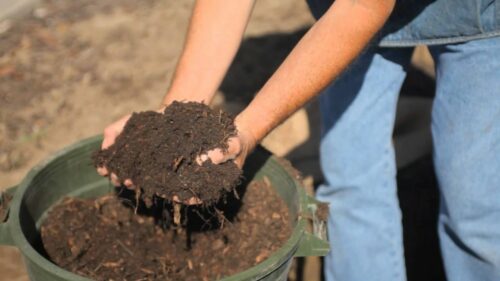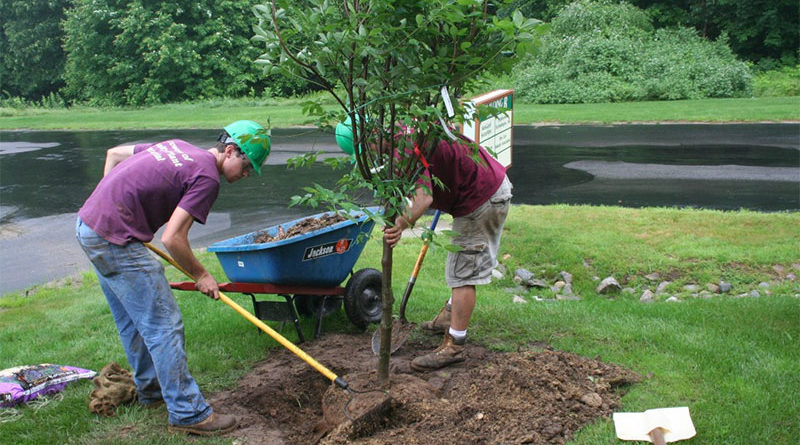Why do trees grow so slow? Here are 8 possible explanations. Trees are typically thought of as living things that grow rather quickly.
But the truth is that some tree species grow at an incredibly slow rate.
Most trees take a long time to reach maturity, and some only live to be a few years old before they die off.
It’s important to understand why this happens to better protect your trees and their environments.
So here are 8 possible explanations as to Why do trees grow so slow.
1) The soil isn’t rich in nutrients

If your tree’s roots don’t have access to water and nutrients, it might be struggling to survive.
If you suspect your soil has poor quality, consider hiring a landscaper.
To enrich it with nutrient-rich compost and other natural ingredients that will help support your plant’s growth.
You can also add an organic fertilizer every spring or fall.
Sometimes, Soil that has poor structure will make it hard for your tree’s roots to spread and absorb water.
Which can make it difficult for them to thrive. For example, compacted clay soil may prevent root growth.
While sandy soil may dry out quickly and not retain moisture.
Talk to a professional about how to amend your garden bed.
Before planting new trees if you suspect your existing soil is hindering their health.
2) The roots aren’t strong enough

One of the leading factors that determine how fast a tree will grow.
Is how quickly its roots develop and spread, as well as how far they reach.
The most important aspect of a tree’s root system is its root hairs.
Which transfers nutrients from the soil to the tree.
If these aren’t strong enough, or if there aren’t enough of them.
Then your tree won’t be able to absorb all it needs for growth.
If you notice that your tree has started growing slower than usual.
Check its root health, you may need to give it a boost with some fertilizer or other treatments.
3) Not enough rain
If a tree is not getting enough water, it will not be able to grow well.
If you suspect that a particular tree in your yard or neighborhood isn’t growing well because of a lack of water.
There’s not much you can do except make sure your local government does its job.
And installs proper irrigation infrastructure if necessary.
Alternatively, look into getting a rain barrel for your home to collect water for use around your property.
Part of making sure you live sustainably is ensuring that each drop counts.
4) Too much watering
Every once in a while, when you notice your plant wilting a little bit.
Take an hour out of your day to water it well.
Overwatering is often thought to be one of the most common causes of slowing growth.
And lack of flowers/fruit on houseplants.
It’s also easy to avoid. If you’re watering from a hose or watering can just let them sit for 15 minutes.
Before putting them away. If you use a drip system or some other automatic watering method, check that it isn’t set too high.
5) tree was planted too late in the season

When you plant a tree in late fall or winter, it grows much slower than if you planted it in spring.
The tree-planting season typically runs from March to August in most states.
To ensure that your tree grows as quickly as possible.
Plant it during one of these months. If you’re planting a fruit tree.
Keep in mind that different varieties have different optimal planting times.
If you live in an area with mild winters.
You can also plant bare-root trees outside. They will usually root and begin growing once warmer weather arrives.
6) Wrong kind of tree planted in the wrong spot
The wrong kind of tree planted in a location will have trouble growing at all.
Or will take much longer to achieve success than it should.
Ideally, you want to plant a species that is native to your area.

But if you’re not sure what kinds of trees grow best where you live.
Start by consulting with a nursery or knowledgeable arborist nearby.
They can point you in the right direction and help make sure you don’t end up with a lemon.
For example, pine trees need plenty of water, but oak trees prefer dryer soil.
If you try to plant one where it doesn’t belong, its growth could be stunted.
7) Just plain sick
Tree roots take a beating and they’re put under a lot of stress.
Which means they can be susceptible to disease and parasites.
Diseases like Dutch elm disease or root rot plague tree species all over the world.
And can severely reduce growth rates for years at a time.
The good news is that many species are resilient and bounce back fairly quickly.
After an outbreak, though in some cases it may be decades until your tree resembles its former self.
8) Not being taken care of properly by owners.
If a tree is neglected for a long period, it may become too weak to grow properly.
No matter how well you take care of a tree.
You can’t make up for what nature didn’t provide in terms of sunlight and water availability.
Unfortunately, there’s no way to speed up how fast a tree grows. As it is going through a weakened state.
Without addressing why it was weakened in the first place.
Conclusion
New growth occurs each year in response to environmental factors, like temperature and moisture.
A new tree will take at least 5 years to reach a height of 25 feet.
As it grows it increases its structural support and nourishes itself.
With leaves that unfurl in spring before dying off in fall, leaving only branches behind.
So while you’re waiting for your new tree to reach that great height.
There’s a reason why it might seem like nothing much is happening at all.

